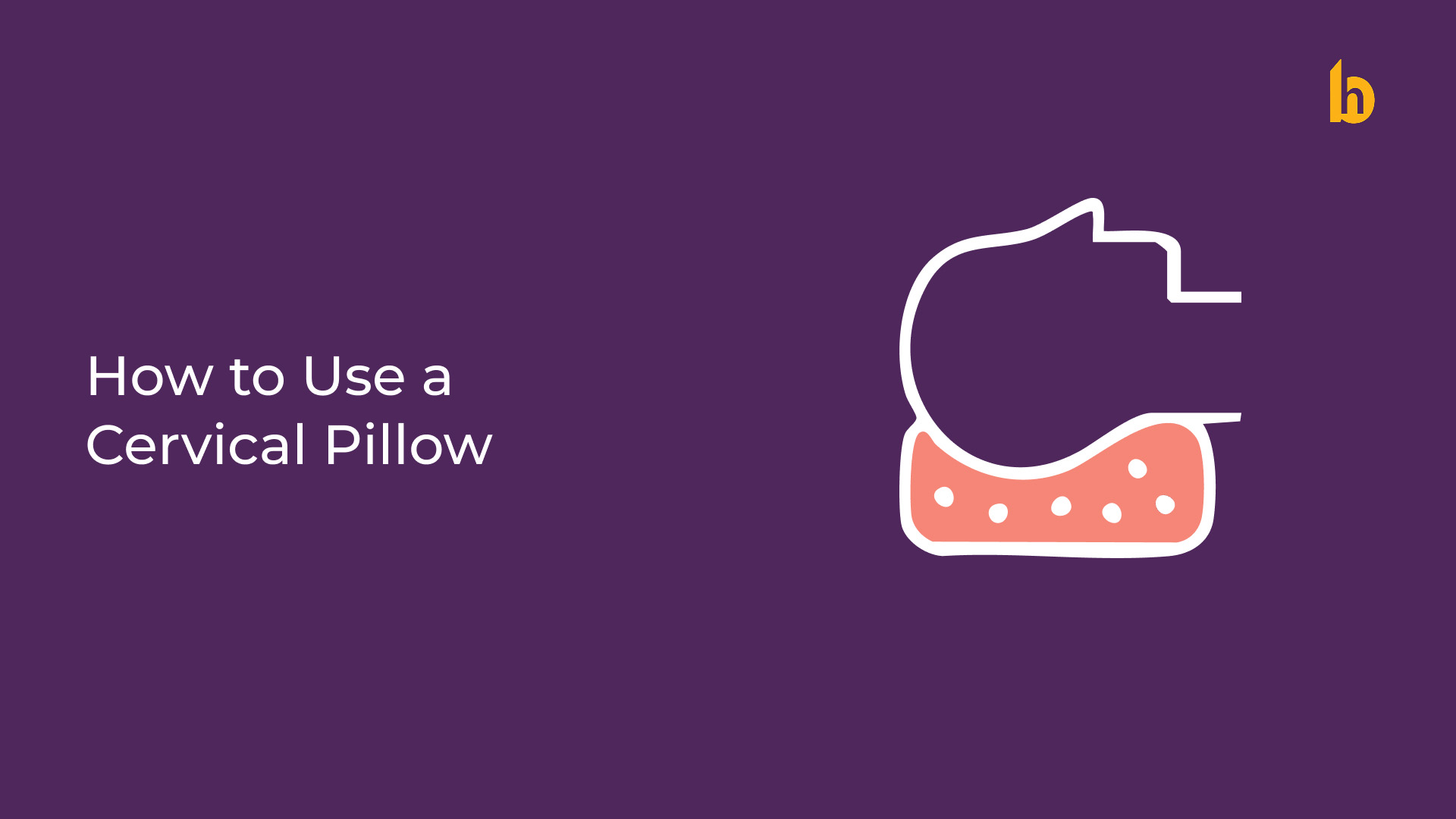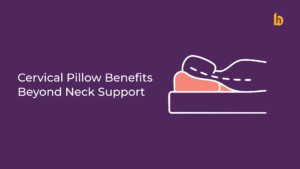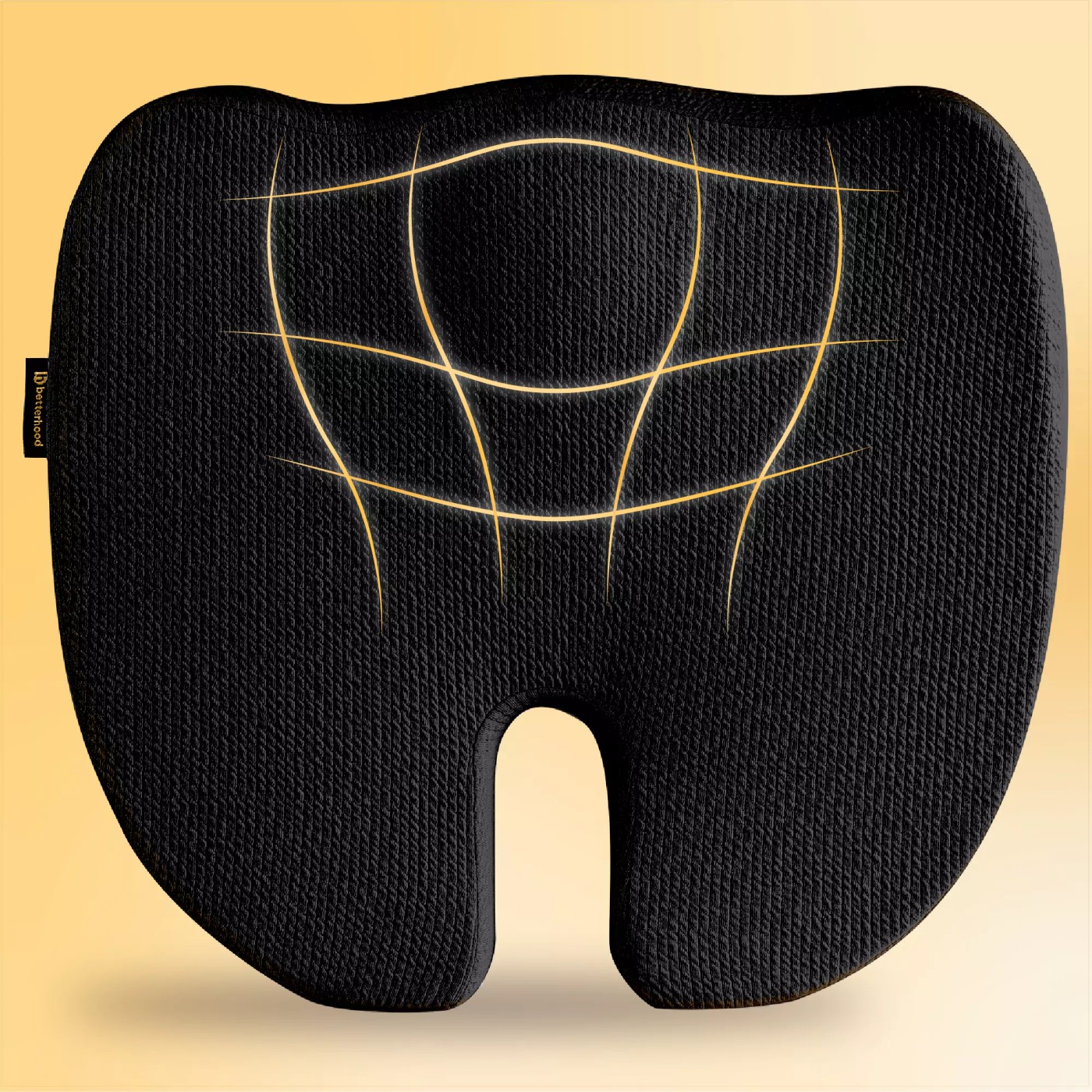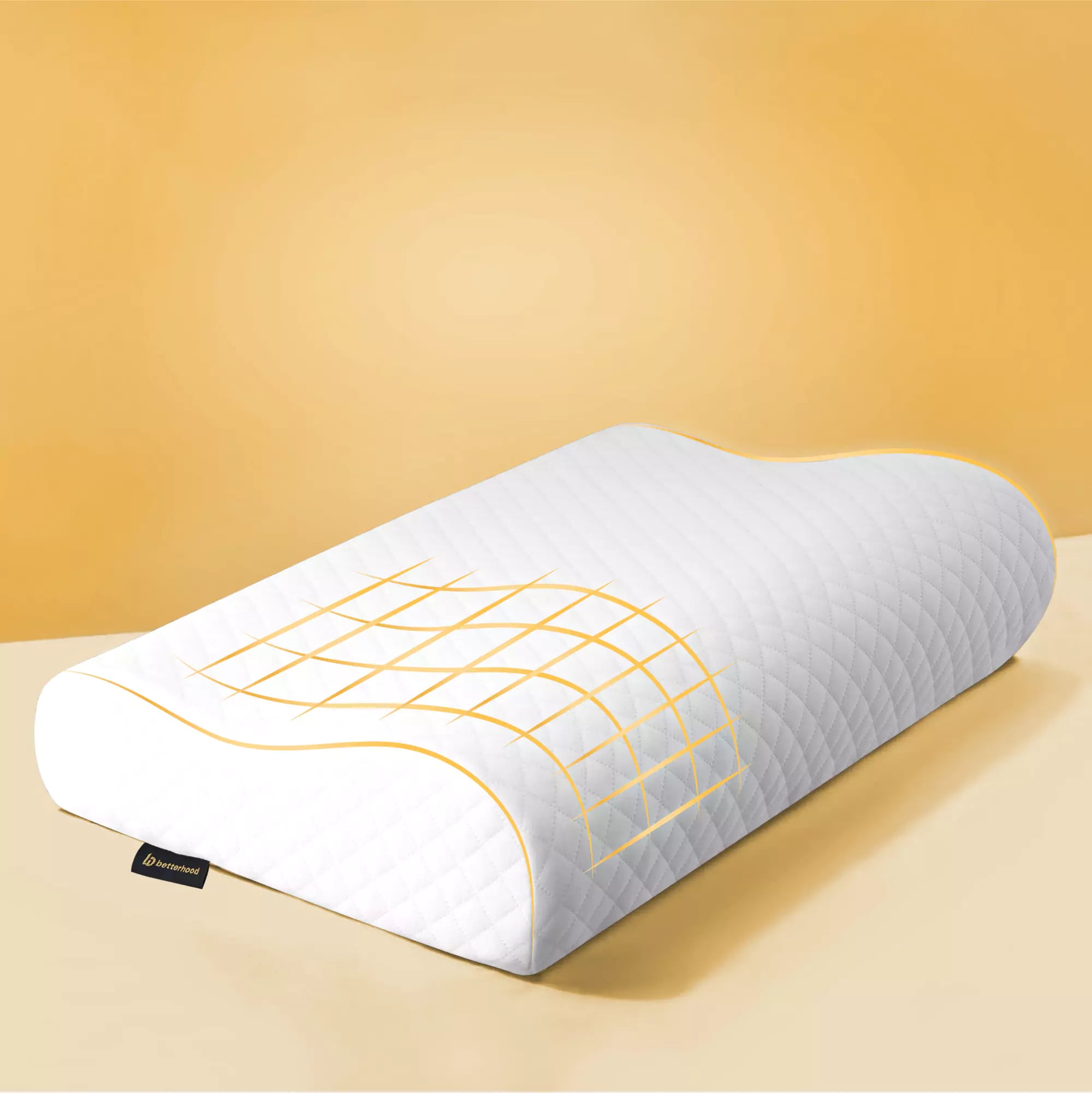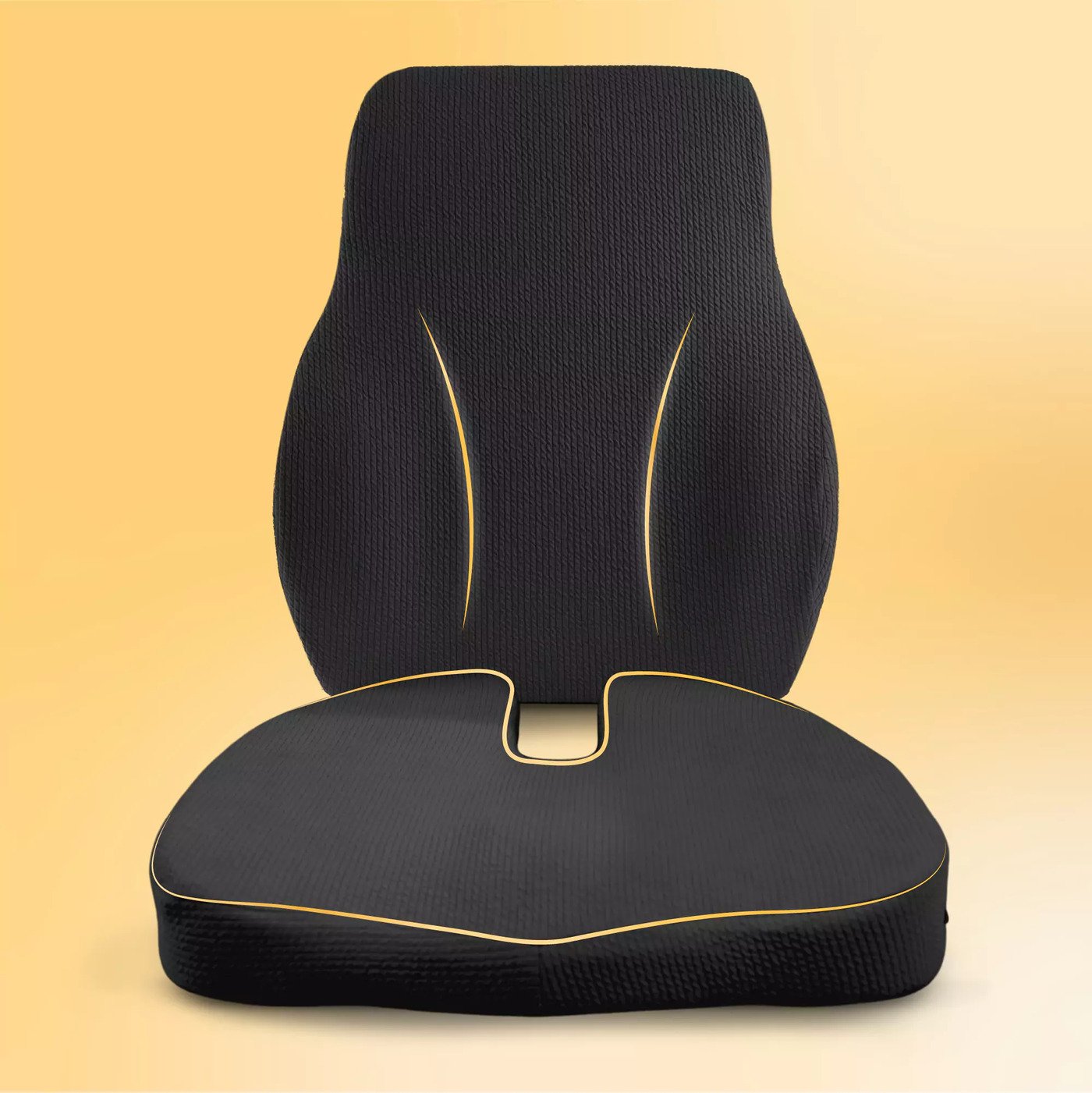Waking up with a stiff neck, dull headache, or shoulder tension is not exactly the kind of start anyone wants to their day. If this sounds familiar, you’re not alone. Millions of people struggle with poor sleep and chronic discomfort, often unaware that their pillow could be the culprit. Cervical pillows, designed specifically to support the natural curvature of your neck, offer a targeted solution. But the thing is, having one is not enough. If you are not using it right, it may be doing more harm than good. This article sheds light on the mystification of the correct use of a cervical pillow so you can now sleep peacefully and wake up without aches.
It’s simple to envision that all pillows are created equal, but cervical pillows are constructed to give support, not comfort. While other pillows become flat under your head, a cervical pillow replicates the natural curve of your neck and keeps your head in alignment with your spine. That’s the correct positioning, more than most people know, since even slight variations in sleeping posture will bunch up your muscles, cramp nerves, and disrupt sleep quality. Sleeping with a cervical pillow correctly is an easy and efficient fix to that, and understanding how to do it properly is the secret.
What Is the Correct Way to Use a Cervical Pillow?
Choosing the Right Pillow for Your Needs
Not all cervical pillows are created equal. They come in different shapes, firmness, and heights, and your best pick depends on your size, sleeping style, and any existing problems such as cervical spondylosis or disc problems. Select pillows with high-density memory foam that are CertiPUR-US approved for consistent support without poisonous chemicals.
Scientific research contributes its strength to the use of ergonomic pillows in pain relief in the neck. In a study in the Journal of Physical Therapy Science, a higher pillow loft was seen to raise neck muscle activity that has the potential to irritate if the pillow is not appropriately designed for the individual [1].
Positioning for Back Sleepers
For back sleepers, the smaller radius of the cervical pillow must be under the head, and the larger contour against the neck. This is for the upkeep of the normal lordotic curve of the cervical spine. Your face won’t tilt forward or backward; it will be parallel to the ceiling.
From Mayo Clinic, sleeping with proper spinal alignment minimizes pressure on joints and muscles and avoids morning stiffness [2].
Positioning for Side Sleepers
Side sleepers require more rise to bridge the gap between the head and the bed, so the neck remains in alignment with the spine. The posture should position your nose at the same level as the body center, and the cervical curve should be supportive of the neck but not raise the head. This decreases pressure against the trapezius and sternocleidomastoid muscles.
A controlled randomized trial showed that usage of an appropriate side-sleeping cervical pillow noticeably lowered neck pain during four weeks [3].
Positioning for Stomach Sleepers (and Cautions)
Stomach sleeping rotates the average neck alignment and extends the natural cervical curve. The position is prevented with cervical pillows, which are low and contoured. If sleeping on the stomach cannot be prevented, use a very low-profile pillow and try to retrain your body to sleep on your back or side in time.
The Cleveland Clinic advises stomach sleepers to even switch sides entirely because this sleeping position is a major culprit for neck strain and long-term problems [4].
How to Transition from a Regular Pillow
It will feel a bit strange initially to switch from a standard pillow to a cervical pillow. Let your body get used to it. Begin with use during naps or alternating nights. Develop usage gradually until it is your “go-to” pillow. It will take two weeks to be completely at ease, as the muscle learns to adapt to enhanced alignment.
Harvard Health Publishing also claims that sleep ergonomics usually takes the body 10 to 14 days to acclimate to [5].
What Are the Most Common Mistakes People Make with Cervical Pillows?
Using the Wrong Height
Height, or loft, is among the most essential factors. A pillow too high will bend the neck to the side or forward, and too low doesn’t offer sufficient support. Both can lead to strained muscles, headaches, and disturbed sleep. Utilize adjustable cervical pillows if you are unsure; these enable you to add or remove layers. Most individuals think firmer or taller is better, but bad height can cause your spine to become out of alignment. Lie down and check to see if your ears, shoulders, and hips are still aligned to search for good support.
Incorrect Placement of the Neck Curve
One frequent error is placing the thick edge below the head instead of the neck. The cervical curve can be flattened by this, and vertebrae and soft tissues will be put under increased stress. Place the deeper contour always directly underneath the neck. This placement error could reduce the efficacy of the pillow and exacerbate sleeping muscle fatigue. Observe the positioning visually prior to reclining and adjust until the curve of the neck is totally supported.
Ignoring Sleep Position Compatibility
Not all sleeping positions can be aided equally well by a cervical pillow. Stomach sleepers, for instance, can exacerbate their condition with a hard, contoured pillow. It is crucial to combine pillow selection with your typical sleeping posture. Side and back sleepers are the most helped, as these sleep postures afford neutral alignment. If you don’t know what your typical sleeping posture is, plug in a sleep monitor or ask a partner to monitor your routine.
How Can You Maximize the Benefits of a Cervical Pillow?
Combining with an Orthopedic Mattress
Your pillow and mattress must work together. A too-soft or sagging mattress will defeat even the best pillow. The Johns Hopkins Medicine experts advise a medium-firm orthopedic mattress to provide spinal neutrality [6]. Without adequate base support from your mattress, your cervical pillow can’t hold your spine in place as well. Test out your mattress by lying flat; if shoulders or hips sink too much, it’s time to upgrade.
When to Replace Your Pillow
All good-quality cervical pillows will last between 18 and 36 months. Indications that you do require replacement are loss of form, sagging, or waking up with unusual pain. Excessive usage, particularly with conditions such as cervical disc degeneration, could necessitate earlier replacement. Place a reminder every year to check in on your pillow’s structure and comfort. If the foam does not rebound rapidly from compression, it might not be providing sufficient support.
Cleaning and Care Instructions
Most memory foam cervical pillows come with removable, washable covers. The foam itself should be spot cleaned and aired out from time to time. Do not soak the foam in water, which can compromise the foam’s structure. Always check the manufacturer’s care label. Maintenance is not only a way to extend the life of your pillow but also reduces your exposure to allergens. Subjecting the foam to sunlight for a few hours a month can also reduce odors and bacterial buildup.
How Do You Know If a Cervical Pillow Is Working for You?
1. Reduced Morning Stiffness
One of the earliest indicators of success is less stiffness in the morning. This shows that ligaments and muscles are being supported at night rather than being overstretched. Waking up with better mobility of the neck or not having to stretch right away is a great sign of progress. Take a simple morning record to document range-of-motion and comfort improvements.
2. Better Sleep Quality
Better sleep metrics like less wakings, increased deep sleep stages, and waking feeling more refreshed should ensue your body adapting to the pillow. A wearable or a sleep tracking app may allow you to measure gains quantitatively. Increased time spent in REM and deep sleep stages should ensue 1–2 weeks of regular use.
3. Fewer Headaches or Neck Aches
Chronic neck pain and tension headaches most often occur from an improper position while sleeping. Relief of these symptoms is a guarantee that your cervical pillow is functioning. If you take less pain medicine or have fewer headaches in the morning, it indicates your pillow is allowing better alignment. Look for indications of symptoms on a week-to-week basis to observe sustained improvement.
When Should You Talk to a Doctor or Physiotherapist?
1. Persistent Neck Pain
If this persists with proper use of a pillow, you might have an underlying musculoskeletal or neurologic disease to be addressed by a physician. Physical examination or imaging studies can be used to exclude important causes. Radiating pain down the arm, numbness, or interference with function should never be dismissed. A doctor can tell if your pillow arrangement is part of the problem.
2. Herniated Disc or Cervical Spondylosis
For conditions like herniated disks or spondylosis, you require specific pillow support. Your physician can help you select a pillow with the right height and firmness. For such conditions, it can aggravate the symptoms or hinder healing if not supported correctly. Consult your physician or physiotherapist regarding your ergonomic products for your personal needs.
3. Post-Surgery Support Needs
Special pillows may be prescribed following cervical spine surgery. Always see your surgeon or physiotherapist after an operation. The wrong pillow to recovery may hinder tissue repair or offer instability to the spine. Postoperative healing is usually a gradual change in sleeping posture under supervision.
Conclusion
A cervical pillow is more than just a sleeping accessory. It’s a painless item and a health aid in the long run if properly utilized. Positioning the pillow as per your sleeping orientation, adjusting it slowly, and using supportive bed clothing will greatly benefit your sleep and relieve agony. Do not make common mistakes and observe your body’s response to reap the full benefit of this ergonomic investment. In proper working, a cervical pillow can be a very useful addition to your health regimen.
Think of this adjustment as a proactive investment in your future well-being. Quality sleep supports everything from better concentration to reduced inflammation, and a well-suited cervical pillow helps make that possible. By staying consistent and mindful of how your body responds, you’re not just sleeping better, you’re setting the foundation for better overall health.
Frequently Asked Questions:
1. Should your shoulders be on a cervical pillow?
No. Your shoulders should rest on the mattress, not the pillow. The cervical pillow is meant to support only the head and neck.
2. How long does it take to adjust to a cervical pillow?
It can take up to two weeks for your body to fully adapt. Start gradually and increase use over time.
3. Do cervical pillows help with snoring?
They can, especially for back sleepers, by aligning the airway. However, other factors like weight and nasal congestion also contribute to snoring.
4. Can I use a cervical pillow every night?
Yes, once your body has adjusted, consistent use is encouraged for long-term spinal alignment.
5. How do I know if my cervical pillow is too high or low?
If your neck tilts unnaturally or you wake with pain or stiffness, the pillow height likely needs adjustment.
References:
1. Okabe N et al., Effects of pillow height on neck muscle activity, Journal of Physical Therapy Science – https://www.jstage.jst.go.jp/article/jpts/29/10/29_jpts-2017-211/_html
2. Mayo Clinic, Sleep Tips: 7 Steps to Better Sleep, Mayo Clinic – https://www.mayoclinic.org/healthy-lifestyle/adult-health/in-depth/sleep/art-20048379
3. Yim J et al., Cervical pillow for side sleepers reduces neck pain, Journal of Back and Musculoskeletal Rehabilitation – https://content.iospress.com/articles/journal-of-back-and-musculoskeletal-rehabilitation/bmr200256
4. Cleveland Clinic, How to Pick the Perfect Pillow for the Way You Sleep, Cleveland Clinic – https://health.clevelandclinic.org/how-to-choose-the-best-pillow-for-the-way-you-sleep
5. Harvard Health Publishing, Sleep and Health, Harvard Medical School – https://www.health.harvard.edu/newsletter_article/sleep-and-mental-health
6. Johns Hopkins Medicine, Choosing the Right Mattress and Pillow, Johns Hopkins – https://www.hopkinsmedicine.org/health/wellness-and-prevention/how-to-choose-the-right-mattress-and-pillow
7. Smith L et al., Pillow hygiene and its effects on sleep, Sleep Health – https://www.sleephealthjournal.org/article/S2352-7218(21)00162-9/fulltext

